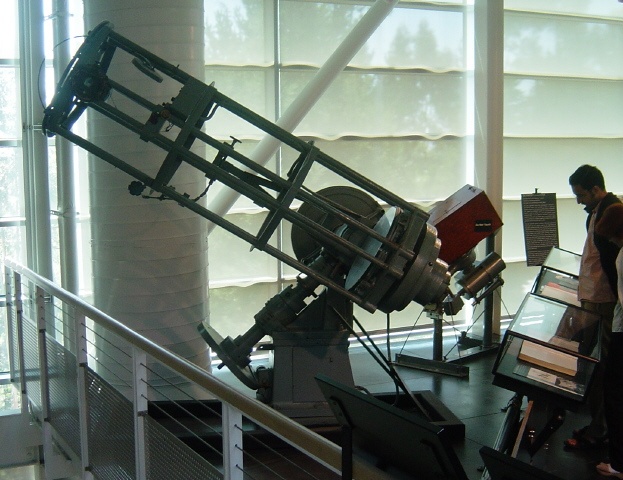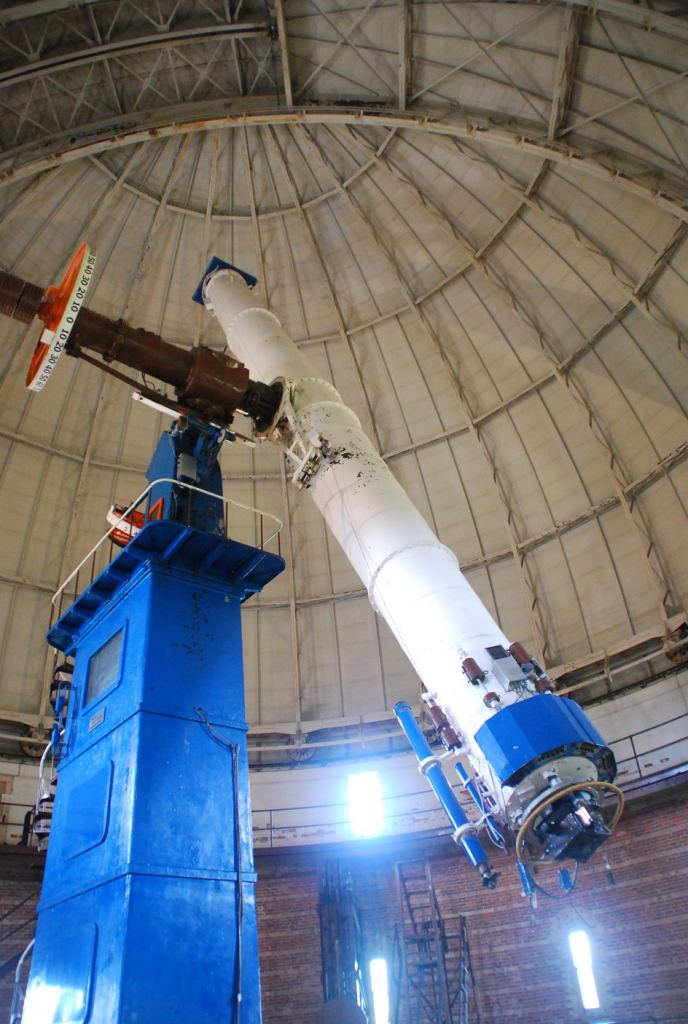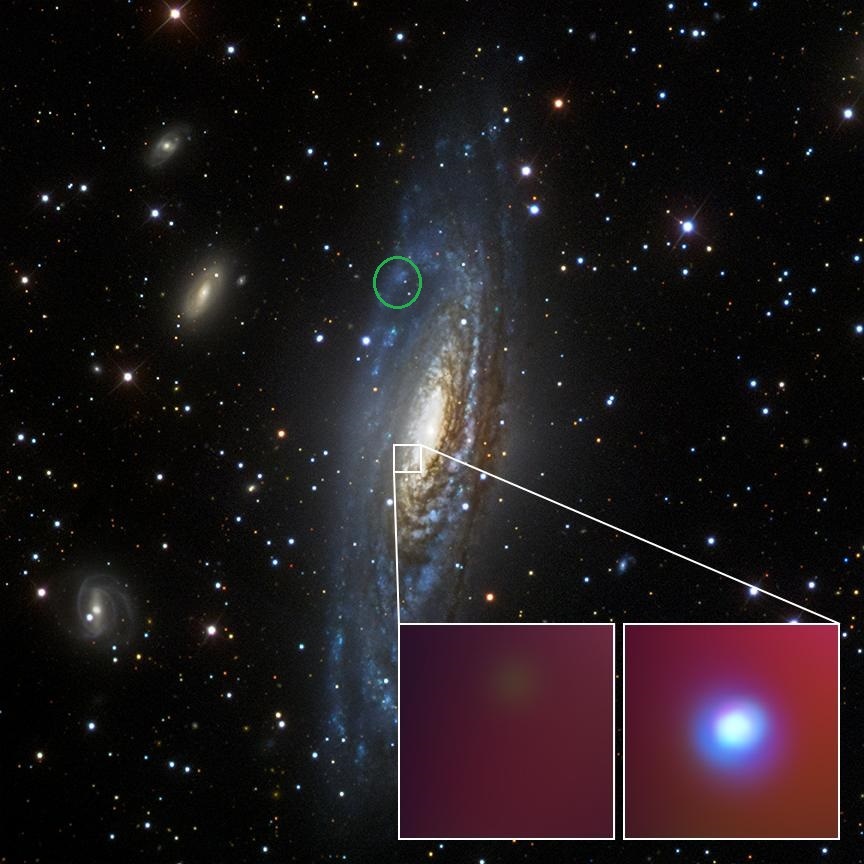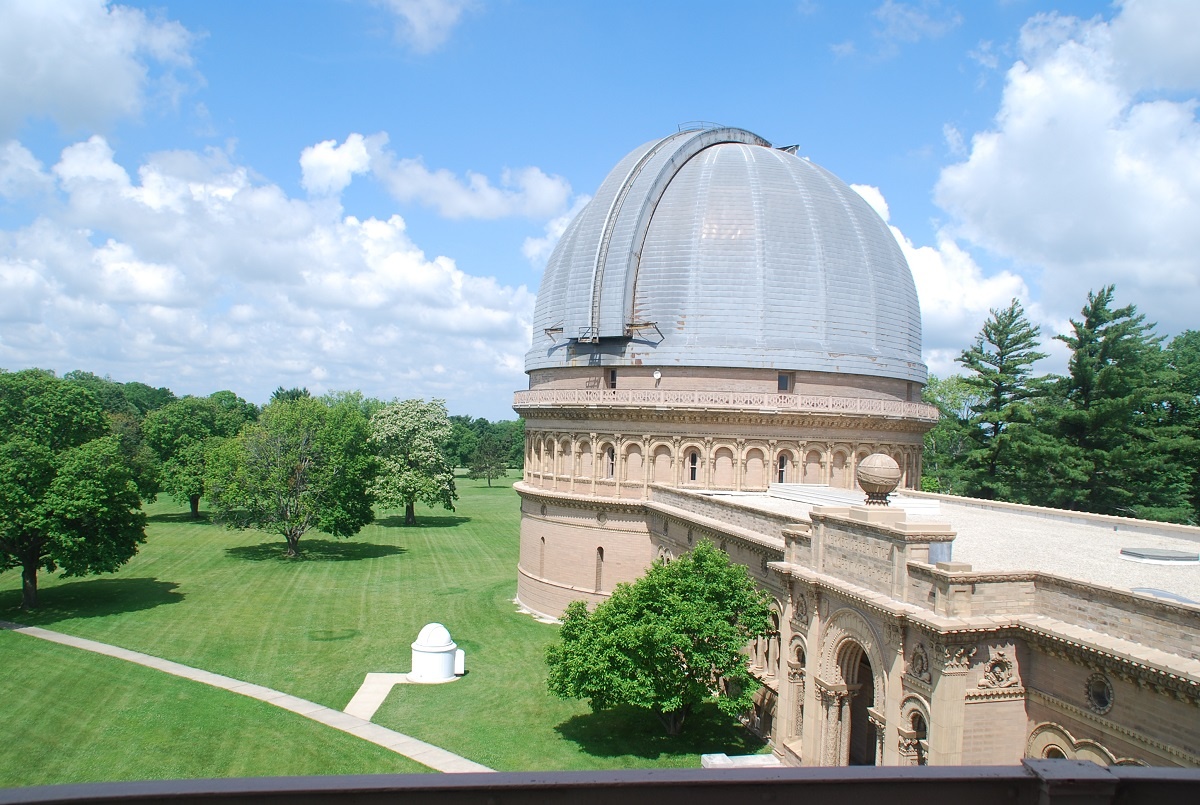A new process highlights an innovative way to get old glass plates online… and turned up a potential extra-galactic discovery over a century old.
You never know what new discoveries might be hiding in old astronomical observations. For almost a hundred years starting in the late 19th century, emulsion-coated dry glass plate photography was the standard of choice used by large astronomical observatories and surveys for documenting and imaging the sky. These large enormous glass plate collections are still out there around the world, filed away in observatory libraries and university archives. Now, a new project shows how we might bring the stories told on these old plates back to light.
More than an estimated 2.4 million glass plates are out there in collections in North America alone. These were taken starting in the 1890s right up until the 1970s, when CCD (Charged Couple Device) detectors started to come online for astronomy. Of these, only an estimated 400,000 plates have been digitized to research quality, most notably by the DASCH (the Digital Access to the Sky Century at Harvard) and the international APPLAUSE (The Archives of Photographic Plates for Astronomical USE) projects.
A team from the University of Chicago Department of Astronomy and Astrophysics, and the Kavali Institute for Cosmological Astrophysics wondered if there might be an easier way to bring these old plates into the modern digital era.
“The plate scanning process is actually quite simple,” Will Cerny (University of Chicago) told Universe Today. “After we select a plate, we make sure the surface is clean so that dust particles don’t get mistaken for stars in the final image. Then, we set our scanner to the highest quality we can and produce an image file. In effect, we are considering the scanner to be a scientific instrument: for each small piece of information on the plate, we get a digital rendition of the amount of light transmitted through the photograph. From there, we upload the resulting file to a website which maps the celestial coordinates onto the image, which also creates a file in a standardized format for astronomical analysis.”
The team turned to a nearby source, the Yerkes Observatory. For the study, the Yerkes Plate Digitization Team wanted a plate ideal for calibrating both stellar brightness and the sky background, covering a swath of sky located away from the galactic plane. The team also wanted plates taken under excellent sky conditions, with long exposures depicting a good variety of galactic in extra-galactic objects in order to gauge limiting magnitude.
Located on the shores of Lake Geneva in southern Wisconsin and built by American astronomer and telescope maker George Ellery Hale in 1897, Yerkes Observatory also houses a collection of 150,000-200,000 glass plates. Though Yerkes is home to the Great 40” telescope—the largest operational refractor in the world—most of the plates in the collection were taken using the 24-inch Ritchey reflector at Yerkes starting in 1901 or at the McDonald Observatory in western Texas.

The era and utilization of glass plates for astrophotography was often tedious and cumbersome. Often, astronomers had to custom-shape the plates to fit specific cameras by hand using diamond cutters. What then followed was often a cold dark night at the eyepiece following a guide star, while the necessary exposures were made. These resulting plates, however, serve as a chronicle of the sky spanning nearly a century.

Interpreting the magnitude scale on the scans and calibrating the plates for factors such as sky glow, surface brightness and saturation (artifacts often introduced by the photographic and scanning process) yield a limiting magnitude of +19, and the scanning process obtained a precision of better than a tenth of a magnitude in brightness. For context, a large backyard telescope can typically see down to about magnitude +14 on a clear night with good seeing, and modern ground all-sky surveys such as PanSTARRS-1 have a limiting magnitude of about 10,000 times fainter, at around magnitude +24.
“The simplicity of the process makes it possible to digitize a large number of plates in a relatively small amount of time,” says Cerny. “It also has the benefit of not requiring a custom scanner, making it accessible to teams without the wherewithal to design or purchase one. Custom scanners are prohibitively expensive. If our methods can be generalized, then photographic plate collections from multiple observatories could be rendered available for use in scientific research.”
In the end, the team selected about 50 plates that met the criterion for the study. The team used a commercially available Epson Expression 12000XL graphic arts scanner, greatly speeding up and streamlining the process. Files were initially scanned as positive .TIFF files (with black stars on a white background) then saved as FITS files, a format familiar to many modern astrophotographers. The targeted scan area resulted in a field of view 1.5 degrees wide, about three times the diameter of a full Moon. Amazingly, one of the very first plates scanned by the team (Ry60) taken in 1903 centered on the +10th magnitude galaxy NGC 7331 located 45 million light-years distant in the constellation Pegasus also turned up a surprise visitor: a guest ‘star’ or possible supernova, not visible in SDSS (Sloan Digital Sky Survey) comparison images. If confirmed, this would be the fourth known supernova observed in this galaxy.

“Our team had actually scanned a number of plates before settling on this particular plate (Ry60) for our paper… however, we had absolutely no idea at first that this plate was hiding this candidate supernova!” says Cerny. “We were going through the image of the galaxy on the plate as part of our analysis, which involved comparing the plate with a modern image of the same field of sky. At one point, we blinked (rapidly alternated) between the two pictures, and noticed what appeared to be a star present on the plate image.” The team also eliminated other potential false positives—such as an asteroid, dust fleck or a galactic classical nova—before measuring the object’s brightness, consistent with a distant supernova.

New Mysteries on Old Glass Plates
What good are old glass plate images of the sky? Well, several recent studies have turned to the record documenting the sky back over a century ago. When astronomers noticed an anomalous dimming seen in Tabby’s Star KIC 8462852, they looked at old glass plates of the same region to show that the strange star is actually fading over longer time scales. Another study looked at the nearby white dwarf named Van Maanen’s Star and demonstrated that astronomers had potentially documented evidence for exoplanets waaaay back in 1917… had they known to look for it.

In addition to looking at the variability of stars over long periods of time, old plates open up the possibility of looking at stellar astrometry or the position and movement of stars via proper motion over a century-plus long baseline. The team used measurements from the European Space Agency’s Gaia mission for comparison in the study to demonstrate this very technique. Gaia released its DR2 (Data Release 2) catalog with over 1.6 billion stellar position measurements in 2018, and just recently went public with EDR3 (Early Data Release 3) on December 3, 2020, with the full release set for late 2021.

In the end, the team and the study demonstrated a low-cost but effective technique to easily scan astronomical glass plates for research level quality, using off-the-shelf commercially available equipment. The team also has long-term plans to make Yerkes plate scans and logbooks available online to the public via the University of Chicago Library website.
It’s definitely worth the effort to preserve those glass plate images of yore. Who knows what other astronomical discoveries are waiting to see the light of day.
Read the original paper: Precise Photometric Measurements from a 1903 Photographic Plate Using a Commercial Scanner.

